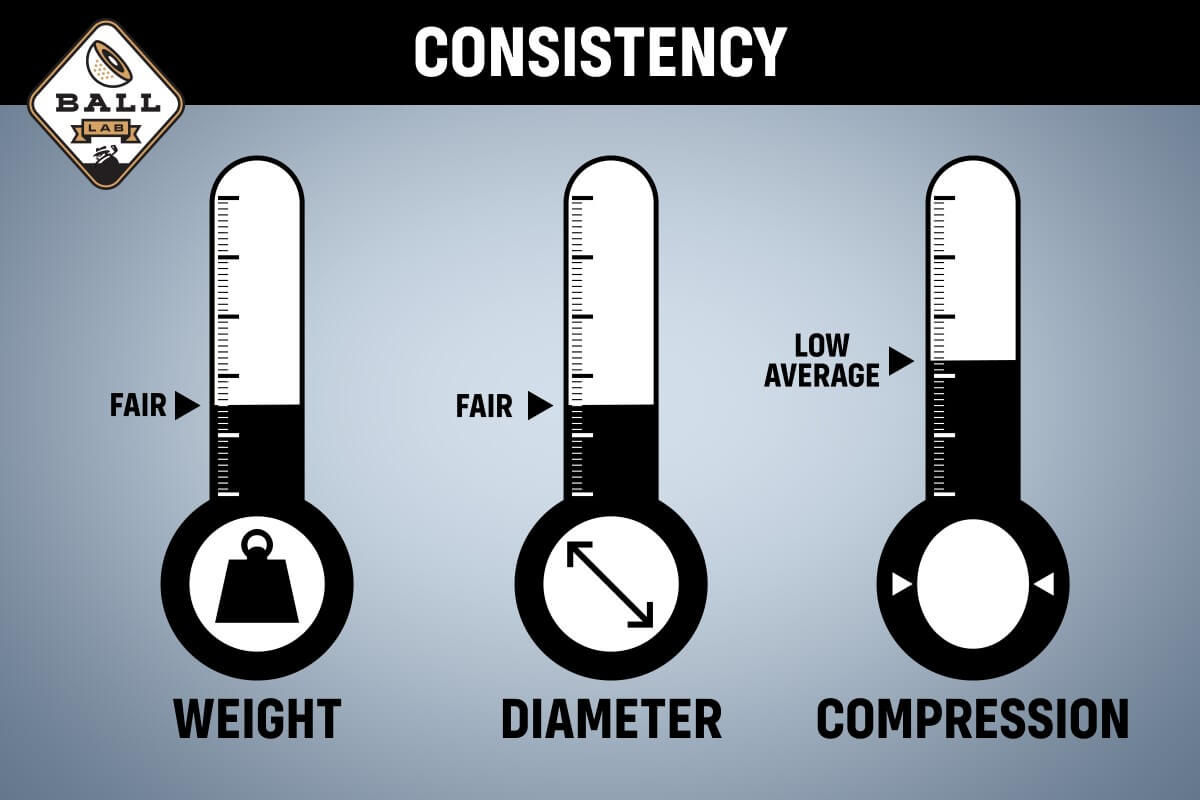MyGolfSpy Ball Lab is where we quantify the quality and consistency of the golf balls on the market to help you find the best ball for your money. Today, we’re taking a look at the Wilson DUO Soft+. An overview of the equipment we use can be found here. To learn more about our test process, how we define “bad” balls and our True Price metric, check out our About MyGolfSpy Ball Lab page.
It’s reasonable to suggest that Wilson’s DUO line represents the original modern take on the ultra-soft golf ball. Sure, Wilson made soft golf balls before DUO but DUO ultimately defined the standard for the category.
Several years after the original DUO, (super) soft challengers abound but DUO is still the ball many golfers associate with the ultimate in soft feel. It remains immensely popular among preference-driven golfers, which is exactly why we’ve put it to the test inside the MyGolfSpy Ball Lab.
About the Wilson DUO Soft+
The Wilson DUO Soft+ is an inexpensive two-piece golf ball with an ionomer cover. Current retail price is just $19.99 a dozen.
Wilson classifies the ball as mid-high launch and low spin, like most inexpensive ionomer offerings. The low spin is, at least in part, why Wilson asserts that Soft is Long. That’s perhaps dubious given that the target market often includes golfers who struggle to get iron shots in the air or generate anything approaching ideal spin rates on iron and wedge shots.
As with other Wilson Balls, the DUO Soft+ is produced by Foremost in Taiwan.
Wilson DUO Soft+ – Compression
On our gauge, the average compression of the Wilson DUO Soft+ is 46. Currently, the Callaway SuperSoft (41 compression) is the only softer ball in our database. Across the market as a whole, the DUO Soft+ easily qualifies as soft. Realistically, it’s hard to imagine a viable golf ball that’s significantly softer.
The compression numbers suggest a ball that’s not particularly well suited for higher swing-speed golfers (it will cost you speed). Seniors and other slower swing-speed players with a feel preference may be willing to overlook the speed penalty. This is especially reasonable for slower swing-speed players who might benefit from the low-spin characteristics.
Wilson DUO Soft+ – Weight and Diameter
- Three percent (a single ball) failed to meet our standard for roundness.
- None of the balls tested exceeded the USGA weight limit of 1.620 ounces.
It should go without saying that, ideally, every ball in the box will be round. However, at $20 per dozen, it’s reasonable to expect an issue or two.
Wilson DUO Soft+ – Inspection
Centeredness and Concentricity
As we’ve mentioned previously, it’s not uncommon to find layer concentricity issues with Foremost-made balls. In a two-piece model like the Wilson DUO Soft+, those will invariably manifest themselves at the cover layer.
In total, we flagged 11 percent of the balls as bad based on inconsistent cover thickness from one side of the ball to the other. Again, given the price point, it’s not an unreasonable percentage.
Core Consistency
While we didn’t flag any balls as bad for core consistency, it is notable that across our sample we found three variations (shown above) in core color. The light pinkish-orange variation on the far left was the most prevalent while a darker speckled version was found in a single box. We also found a few of the paler versions with small bits of material.
While the second box measured was on average firmer, heavier and a bit larger, we didn’t see an obvious between those measurements and the core coloring.
Cover
We found no notable issues with the covers on the ball.
General Observations
While not as thin as the typical urethane offering, covers on the DUO Soft+ are a bit thinner than we’d expect from the ionomer category. While it’s not going to give you a massive amount of greenside spin, the thinner cover design should help a little.
Wilson DUO Soft+ Consistency
In this section, we detail the consistency of the Wilson DUO Soft+. It’s a measure of how similar the balls in our sample were to one another, relative to all of the models we’ve tested to date.
Weight Consistency
- Consistency (of weight) across the Wilson DUO Soft+ fell within the fair (below average) range.
Diameter Consistency
- Diameter consistency relative to the other balls in our database also fell within the fair range.
Compression Consistency
- The compression consistency of the Wilson DUO Soft+ is in the low end of the average range.
- Compression range across the sample was 11.5 points. That’s a bit higher than what we typically find across a sample.
True Price
True Price is how we quantify the quality of a golf ball. It's a projection of what you'd have to spend to ensure you get 12 good balls.
The True Price will always be equal to or greater than the retail price. The greater the difference between the retail price and the True Price, the more you should be concerned about the quality of the ball.
Wilson DUO Soft+ – Summary Report
To learn more about our test process, how we define “bad” balls and our True Price metric, check out our About MyGolfSpy Ball Lab page.
The Good
The Wilson DUO Soft+ is an inexpensive ball that offers an incredibly soft feel.
The Bad
In total, we flagged just under 17 percent of the sample as bad. It’s also true that the Wilson DUO Soft+ isn’t a particularly consistent golf ball.
True Price
The True Price of the Wilson DUO Soft+ is $23.99. That represents a 20-percent increase over MSRP. By no means is DUO Soft+ a performance-first offering but for golfers on a budget looking for soft feel, it may hit the sweet spot.
Ball Lab Top Performers
Want to know which balls have performed best in Ball Lab testing so far?
Check out:






















mark
3 years ago
I agree with a couple of the other comments, using 3 different swing speeds to test golf balls. Using an Iron Byron machine at 70,, 90 and 110 mph swings could help many average golfers in choosing a golf ball. Someone with a 70 mph driver swing speed vs 110 mph swing will get different results when hitting a driver, or spin rate when hitting their irons. A golfer swinging slow will not compress a hard golf ball very much.